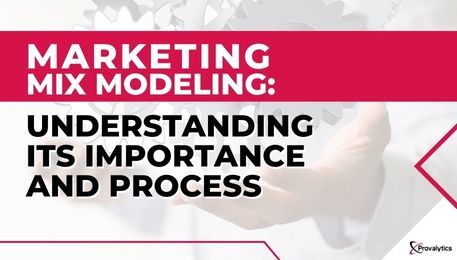Marketing Mix Modeling: Understanding its Importance and Process
understanding how different marketing techniquesdeling (MMM) is a statistical approach that assists businesses in understanding how different marketing techniques and media investments affect business outcomes. MMM enables companies to understand which marketing tactics are most beneficial and how they should be distributed to improve return on investment (ROI) by assessing the impact of various marketing initiatives.
Stages in the Process of MMM
There are several stages in the process of carrying out an MMM project. First, it is necessary to define the questions that the company wishes to answer and to identify the data needed for modeling. The accuracy of the model’s output grows as the amount of years included in the analysis increases. However, it is critical to ensure that the data is not out of date or includes factors that have become no longer necessary for the company. Brand tracking data, in addition to sales and media spend, is critical for larger companies. It collects key performance indicators (KPIs) for brands such as ad and brand awareness, brand consideration, and client brand preference.
🚀 Yes, I Want The 2024 Playbook!
The second stage entails envisioning the data to ensure its accuracy and suitability. The modeling process can begin once the data is confirmed to be correct. The model’s results shed light on the impact of various marketing tactics and how they impact the company. This contributes to answering the company’s core questions, such as the optimal media budget, the appropriate split between different media channels, and the harmony of short-term and long-term communication.

Important Advantages of MMM
One of the most important advantages of MMM is that it allows businesses to optimize their marketing and thus impact their bottom line. It also assists businesses in assessing the change in investment and understanding how to balance short-term and long-term communication in the future. A retail company, for example, could use MMM to quantify the effectiveness of its advertising campaigns, determine which channels are generating the most earnings, and optimize its media spending appropriately. This would assist the company in increasing its overall profitability and maximizing its return on investment.
It is important to note, however, that MMM is not a one-size-fits-all strategy. Every business has distinct marketing objectives, target audiences, and challenges. As a result, it is critical to tailor the approach to the specific demands of the company. It’s also critical to make sure the data used in the modeling is correct, relevant, and up to date. Businesses can then make informed decisions that result in increased revenue, increased profits, and long-term success.
Marketing Mix Modeling is a powerful tool that allows businesses to optimize their marketing and increase their bottom line. MMM provides insights into which channels are driving revenue and how media spend can be optimized for better ROI by analyzing the impact of various marketing tactics. While carrying out an MMM project can be complicated, it is critical for companies seeking to maximize their marketing efforts and remain competitive.
What is Marketing Mix Modeling (MMM)?
MMM is a statistical approach that helps businesses understand how different marketing techniques and media investments impact business outcomes. It enables companies to understand which marketing tactics are most effective and how they should be distributed to improve return on investment.
What are the stages of carrying out an MMM project?
The first stage is to define the questions that the company wishes to answer and to identify the data needed for modeling. The second stage entails envisioning the data to ensure its accuracy and suitability. The modeling process can begin once the data is confirmed to be correct.
What are the benefits of MMM?
MMM allows businesses to optimize their marketing and impact their bottom line. It also helps businesses assess the change in investment and understand how to balance short-term and long-term communication in the future. MMM provides insights into which channels are driving revenue and how media spend can be optimized for better ROI.
Is MMM a one-size-fits-all strategy?
No, MMM is not a one-size-fits-all strategy. Every business has distinct marketing objectives, target audiences, and challenges. It is critical to tailor the approach to the specific demands of the company.
Why is it important to make sure the data used in the modeling is correct, relevant, and up to date?
It is important to ensure the data used in the modeling is correct, relevant, and up to date to ensure the accuracy of the model’s output. The accuracy of the model’s output grows with the number of years included in the analysis. However, it is critical to ensure that the data is not out of date or includes factors that are no longer necessary for the company.

